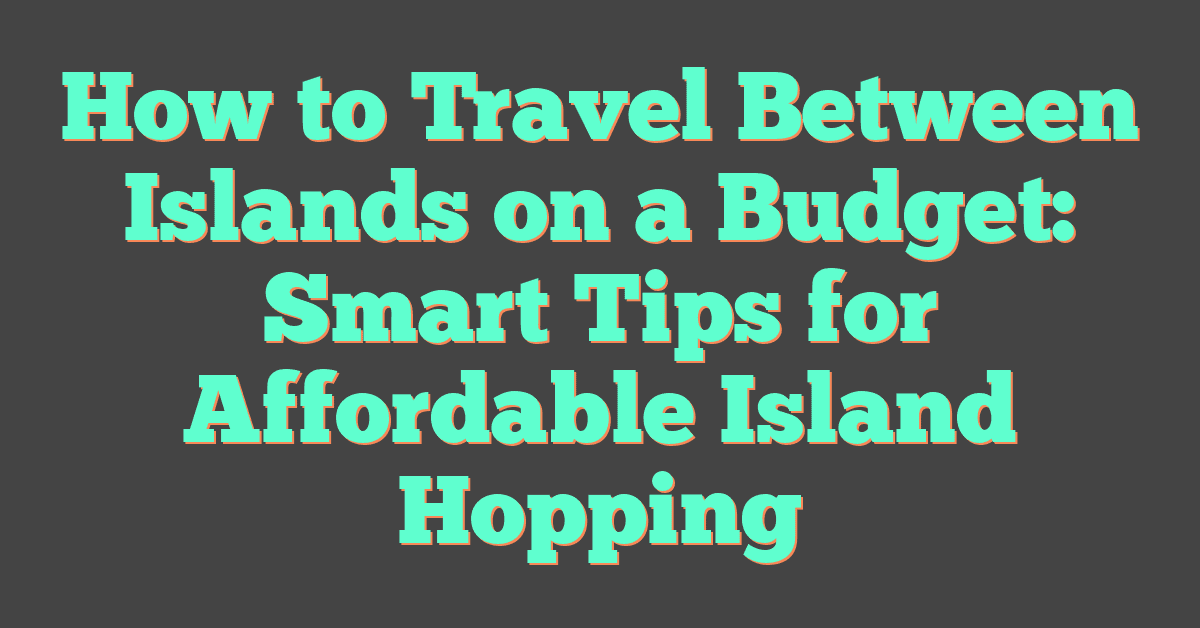When I think about surfing in Hawaii, the Big Island stands out for its quiet charm and variety of surf breaks. There are plenty of great surf spots here for both beginners and those looking for bigger waves.

The Big Island offers some of the best surf breaks in Hawaii, from beginner-friendly places like Kahaluʻu Beach Park to popular spots such as Banyans and Pine Trees.

Each surf spot on the island offers something different. If you want a relaxed session with other beginners, Kahaluʻu is great for both surfing and snorkeling.
More experienced surfers often go to Banyans or Pine Trees in the Kona area. Some also visit Richardson Ocean Park or Honoli’i Beach Park near Hilo for some of the best waves on the island.
Surfing on the Big Island blends local Hawaiian culture with a relaxed vibe. I’m excited to share what makes these surf spots special and help you find the perfect wave.
Overview of Surfing on the Big Island
Surfing on the Big Island feels different from other Hawaiian Islands. The coastline offers many types of surf, strong local culture, and unique weather patterns that make every session special.
Geography and Surf Culture
The Big Island is the largest in Hawaii and has more coastline than any other island. Most surf breaks are spread out, with famous spots on both the Kona and Kohala coasts.
These areas are easy to access for both beginners and experienced surfers. Local surf culture feels welcoming if I show respect in the water.
Most surfers I meet are friendly, but they value safety and surfing etiquette. Surf schools operate near beginner-friendly spots, which helps newcomers learn the basics.
Some reefs suit experienced surfers, while areas like Kahaluʻu are better for beginners. The overall vibe combines a laid-back community with deep respect for the ocean.
Best Times to Surf
The best time to surf on the Big Island is in winter, from November to April, when north and northwest swells arrive. During this season, I see bigger and more powerful waves, especially on the Kona coast.
Summer brings smaller south swells, which is good for those still learning. Mornings are usually calm, and winds pick up by midday, which can affect wave quality.
Local surf reports help me pick the right time and spot. There’s usually something surfable year-round. Planning around swell direction and wind helps maximize any surf trip.
Find out more about the best time to surf on the Big Island.
Wave Types and Conditions
Waves on the Big Island often break over lava reefs. This leads to faster and more powerful surf than on sandy beaches.
Spots like Richardson Ocean Park and Honoli’i Beach Park are popular for both locals and visitors. Each spot offers waves with its own personality.
I usually see a mix of left and right breaks. Some areas are better for shortboards, while others suit longboards.
Some beaches have strong currents, while others are protected and ideal for practice. The Kona coast receives reliable surf during both winter and summer.
Beginners might want to stick to breaks where waves are mellow and manageable, like Kahaluʻu. Advanced surfers often head to challenging reef breaks.
Explore Big Island surf conditions and spots for more details.
Top Surf Breaks on the Big Island
The Big Island offers a unique set of surf spots on both the Kona Coast and the Hilo side. Conditions can change quickly, so knowing where to go saves time and leads to a better experience.
Kahalu’u Beach Park
Kahalu’u Beach Park is my top pick for learning to surf on the Big Island. The surf break here is gentle, which is perfect for beginners or anyone looking to practice.
The sandy-bottomed entry makes it safer, and surf schools often hold classes here. The waves are usually waist-high, and there’s a separate area for surfing away from snorkeling.
Early mornings are less crowded, which helps me catch more waves. Lifeguards are on duty, and there are restrooms, showers, and picnic tables.
The spot is also known for its clear water, and sometimes I see turtles or tropical fish swimming nearby. For first-timers or families, Kahalu’u Beach Park is both convenient and safe.
Lymans
Lymans is a favorite surf spot of mine on the Kona Coast because of its long, left-breaking waves. Locals love it, and it offers a classic point break that works best on a southwest swell.
I find the takeoff spot near a big banyan tree, which makes it easy to locate. The reef creates well-shaped waves that can get fast and hollow as they hit the inside section.
The break isn’t ideal for beginners because of the shallow reef and sometimes strong currents. I recommend it for intermediate or advanced surfers who are comfortable with reef breaks.
Parking is limited, so I plan ahead and park with care. Watching the sunset from Lymans after a good session is always memorable.
Honolii
On the Hilo side, Honolii is the most consistent surf spot in the area. I see surfers here year-round, with wave conditions that change from mellow to fast and challenging.
The break features several peaks to choose from, and the river mouth creates strong, reliable waves. The beach is made up of black sand and cobblestones.
I’m careful getting in and out, especially at high tide. This spot attracts both shortboarders and longboarders, so it has a mixed and friendly vibe.
Honolii Beach Park has parking and a lookout, so it’s easy to check surf conditions before paddling out.
Surf Spots for Experienced Surfers
Some breaks on the Big Island attract advanced surfers looking for a challenge. These spots have powerful waves, sharp lava rocks, and quick takeoffs, so I always stay alert and respect local etiquette.
Banyans
Banyans is my favorite surf break when I want a fast, powerful wave. It’s located in Kona and is known for its consistent reef break.
When the swell hits right, especially in winter, I can expect long, peeling lefts and occasional rights. The takeoff at Banyans is quick, so I use my shortboard for better control.
The lineup is usually full of locals, so I make sure to be respectful and wait my turn. The reef is sharp, with exposed lava rocks just beneath the surface.
Wearing booties helps, especially for the paddle in and out. Banyans offers some of the best conditions on the Big Island for experienced surfers.
Waves often get overhead and powerful, which can be thrilling but also risky. I check the tides and winds before paddling out, as they make a big difference in wave quality.
You can find more about Banyans and other advanced spots at this surf spot guide.
Pine Trees
Pine Trees is another classic reef break on the Kona side, just north of the airport. I go here when I want variety, since it offers multiple peaks and works in different swell directions.
The main break is fast and steep, favoring experienced surfers who can handle heavy drops and tricky sections. Shortboards work best here, especially when it’s firing.
The takeoff zones shift, and the crowds can be dense, so I always stay aware and watch for sets. Hidden lava rocks dot the inside, so wipeouts can be tough.
I like the open space on the beach if I want to take a break. Still, this is not a beginner-friendly spot—waves break on shallow reef, and currents can be strong.
On bigger days, Pine Trees offers some of the most exciting and demanding rides on the Big Island. For more information, check out details on surfing at Pine Trees and other experienced breaks.
Best Places for Beginners
Surfing for the first time on the Big Island can feel exciting and a bit overwhelming. I know that choosing an easy surf spot is important, especially if you’re using a longboard and still learning.
Magic Sands
Magic Sands is one of my favorite places to start surfing as a beginner. The beach has soft, white sand, making falls a lot less scary.
The waves here are usually gentle, especially in the summer months. This makes Magic Sands a good place to build your skills and gain confidence in the water.
There is plenty of room for everyone—new surfers, swimmers, and bodyboarders all share the area, which gives a friendly vibe.
I recommend bringing a longboard, as the waves break a bit slower and give you enough time to stand up and practice. Lifeguards watch over the area, and restrooms and showers are close by.
It’s a surf spot that feels inviting for anyone starting out.
| Magic Sands Quick Guide | |
|---|---|
| Beach Type | Sand |
| Wave Type | Small, Rolling |
| Board Recommendation | Longboard |
| Facilities | Restrooms, Showers, Lifeguards |
Hapuna Beach
Hapuna Beach is another surf spot I recommend for beginners. The sandy bottom means you don’t have to worry about hitting rocks if you fall.
The waves here are best for learning when the surf is smaller. This usually happens in the spring and early summer.
I love how wide Hapuna Beach is, so I never feel crowded. The gentle waves make it easy to paddle out and catch whitewater rides on my longboard.
This is a great place to learn the basics before trying bigger breaks. There’s plenty of parking and shaded spots under palm trees.
Lifeguards watch the beach most days. That makes Hapuna a safe and comfortable choice for beginners.
Essential Tips for Surfing Safely
To stay safe while surfing on the Big Island, I watch the ocean, follow local rules, and use the right gear. I pay close attention to my surroundings and what I bring into the water.
Ocean Safety and Hazards
When I surf on the Big Island, I watch for strong currents, changing tides, and sharp reefs. Many surf breaks have lava rocks under the water.
These rocks can cause scrapes and injuries if I’m not careful. I look out for reef cuts and try to keep my feet off the bottom.
Before paddling out, I watch the waves from shore for at least 15 minutes. This helps me spot where the waves break and where the currents go.
I check surf reports and listen to lifeguard warnings. Conditions can change quickly.
I bring reef-safe sunscreen and drink plenty of water to stay hydrated. When I surf near reefs or lava rocks, I wear a rash guard to protect my skin.
Key Hazards:
- Lava rocks and reefs can cause injury
- Strong currents and waves
- Sun exposure and dehydration
For more about hazards on the Big Island, see this guide to staying safe while surfing local reefs.
Surf Etiquette
Respect comes first when I surf. I avoid paddling straight into the lineup or cutting in front of people already on a wave.
The person closest to the wave’s peak has the right to surf it. Dropping in on someone else is disrespectful.
If I’m new to a surf break, I watch how locals behave and wait my turn. I never crowd someone’s space or get in their way.
If I wipe out, I move aside so others stay safe.
Here’s a quick surf etiquette checklist I follow:
- Wait for my turn
- Never snake or drop in
- Respect the lineup
- Be friendly and polite
Surf etiquette is especially important on the Big Island, where locals expect visitors to respect these rules.
Gear Recommendations
The right gear depends on the surf break and my skill level. For spots with bigger waves and sharp lava rocks, I use a leash so my board doesn’t drift away.
I wear a rash guard or surf shirt to protect my skin from the sun and reefs. On mellow beach breaks, I use a longboard, especially if I’m just starting out.
For steeper or reefy spots, I use a shortboard only if I feel confident. When learning, I choose surf breaks marked as beginner-friendly and avoid tricky reef breaks.
Essential gear list:
- Longboard or shortboard (based on skill)
- Leash
- Rash guard or wetsuit top
- Reef-safe sunscreen
- Water shoes (for rocky areas)
For more advice on picking the best gear, see these tips for learning a new surf break.
Staying on the Big Island

I look for a place to stay that makes surfing and relaxing easy. Choosing the right vacation rental and location helps me get the most out of my trip.
Choosing a Vacation Rental
When I search for a vacation rental on the Big Island, I check that it has enough space for my surfboards and gear. Many rentals offer basics like kitchenettes and laundry, which make long stays easier.
I also look for rentals near well-known surf spots and beaches. This way, I spend less time driving and more time surfing.
Popular choices include condos, homes, and smaller units close to surf zones. If I want surf lessons or equipment, some rentals partner with local surf shops or schools.
This makes it easy to schedule classes or rent a board. Prices can change depending on the season, so I book early when I can.
Best Areas to Stay for Surfers
For surfing, I focus on the Kailua-Kona area along the Kona coast. Condos on Alii Drive are close to surf breaks and local shops.
Staying here lets me surf in the morning and explore town in the afternoon. Farther north, the Kohala Coast has beautiful beaches and quieter rental spots.
When I want a peaceful stay, I choose this area but still stay near spots like Kawaihae breakwater and Pine Trees. The west shore usually gets good waves and has many options.
If I surf on the Hilo side, I look at places near Richardson Ocean Park and Honoli’i Beach Park. The choice depends on the breaks I want to surf most.
Being close to top spots saves me time and helps me catch more waves each day.
Beyond the Waves: Other Water Activities

When I visit the Big Island, I always find more to do than just surfing. The shoreline has some of the best places for snorkeling and unique chances to swim with dolphins.
Snorkeling Destinations
One of my favorite things to do is snorkeling at Captain Cook Monument. The waters there are usually clear, and the coral reef is full of colorful fish like parrotfish and butterflyfish.
Some days, I even spot sea turtles gliding nearby. I also like exploring Honaunau Bay, also known as Two Step.
It’s easy to enter the water there, and the lava rocks make good spots for resting between swims. If I want a sandy beach, I might head to Kahalu’u Beach Park, which has shallow waters and a lot of marine life.
Here’s a quick list of top spots:
- Captain Cook Monument
- Honaunau Bay (Two Step)
- Kahalu’u Beach Park
These places are great for beginners. Even experienced snorkelers will find plenty to explore.
I bring my own gear or rent from a local shop for the best fit and comfort.
Swimming With Dolphins
Swimming with dolphins in the wild is something I’ll never forget. Early mornings are often the best time to see spinner dolphins in Kealakekua Bay.
The dolphins are curious, but I stay respectful and keep my distance. I let them decide if they want to come closer.
Joining a guided tour helps me find dolphins. Guides know where the dolphins usually swim and follow rules to keep everyone safe.
Some tours leave from the Kona coast and can combine dolphin spotting with snorkeling near Lanai Lookout.
For safety, I always follow these tips:
- Never chase or touch the dolphins.
- Stay calm and quiet in the water.
- Use reef-safe sunscreen to protect the ocean.
Swimming with wild dolphins is fun and lets me see how intelligent and playful these animals are in their natural home.
Famous Surfers and Surf History

Surfing in Hawaii has shaped the sport worldwide. Many important people and places in surfing come from these islands, especially the Big Island and surfers like Duke Kahanamoku.
The Legacy of Duke Kahanamoku
Duke Kahanamoku is often called the “father of modern surfing.” His story inspires me because he was a champion swimmer who won Olympic medals for the United States and a talented surfer who introduced surfing to people around the world.
Duke shared Hawaiian surf culture and techniques, helping to turn surfing from a local tradition into an international sport. He grew up riding waves at Waikiki Beach on Oahu, but his influence reached far beyond Hawaii.
Duke’s sportsmanship and aloha spirit inspired many to respect both the ocean and Hawaiian surfing traditions. Surfers everywhere still honor his role in shaping how we surf and think about the sport.
You can learn more about how Duke Kahanamoku shaped surfing history.
Big Island’s Role in Hawaiian Surfing
The Big Island stands out for its unique volcanic shoreline and a surf scene that feels both historic and current.
The island’s west side, especially around Kailua-Kona, features well-known breaks like Banyans. Many people call Banyans the best surf spot on the island.
These breaks challenge surfers with powerful waves, especially during the winter months.
Top surfers like CJ Kanuha and Torrey Meister grew up on the Big Island and learned on its tricky reefs. They went on to achieve great things in the sport.
The island also keeps old traditions alive. Many locals surf just for the joy of it.
Surfing here is not only a sport but a way of life rooted in history.
For more about spots and local athletes, check the Big Island’s sacred surfing history.




